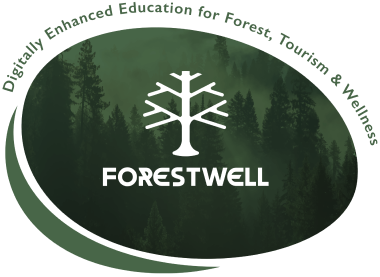This is ForestWell’s Storytelling module. Storytelling is a vital component in the development and delivery of services and business ideas. Mastering the art of storytelling not only adds significant value but also encourages a commitment to well-being through Regenerative thinking—benefiting individuals, communities, and the natural environment alike.
You will learn how storytelling is a powerful tool for promoting your forest-based products or services, enabling you to connect deeply with your audience, inspire meaningful action, and cultivate a community of advocates for sustainability and regeneration. By crafting a compelling narrative that showcases the positive impact of your offering, you can engage and mobilise others to support your regenerative mission.
For ForestWell, storytelling is essential to conveying our mission, values, and the transformative experiences we offer in forested environments. Through impactful narratives, we can inspire, educate, and engage our audience, fostering a profound emotional connection with nature and well-being. This module will equip you with the skills to use storytelling effectively, helping to amplify ForestWell’s message and drive its mission forward.
There are a four Storytelling topics and their contents progress logically so that in the first topic we examine storytelling from the perspective of the storyteller and the goal. In the second topic, we learn to create a coherent and engaging narrative, by using the narrative structure framework. In the third topic, we get to know Storytelling techniques and in the fourth topic, we learn how the Storytelling method can be used in a forest context.
Development Tasks: This topic is a bit different to other ForestWell topics. It includes 2 Activities rather than a Quiz. Based on the contents of the four Storytelling topics, the activities are designed to help you create Storytelling around an experience, service or update your business idea with material to guide your efforts. In the 5.7 Activities section download the development activities material and complete it at your own pace.
5.1 Introduction to the Versatile Possibilities of Storytelling
5.2 Narrative Structure of Storytelling
5.3 Storytelling Techniques
5.4 Storytelling in the Forest Context
5.5 Case Studies & Success Stories
5.6 Additional Material
5.7 Development Tasks
